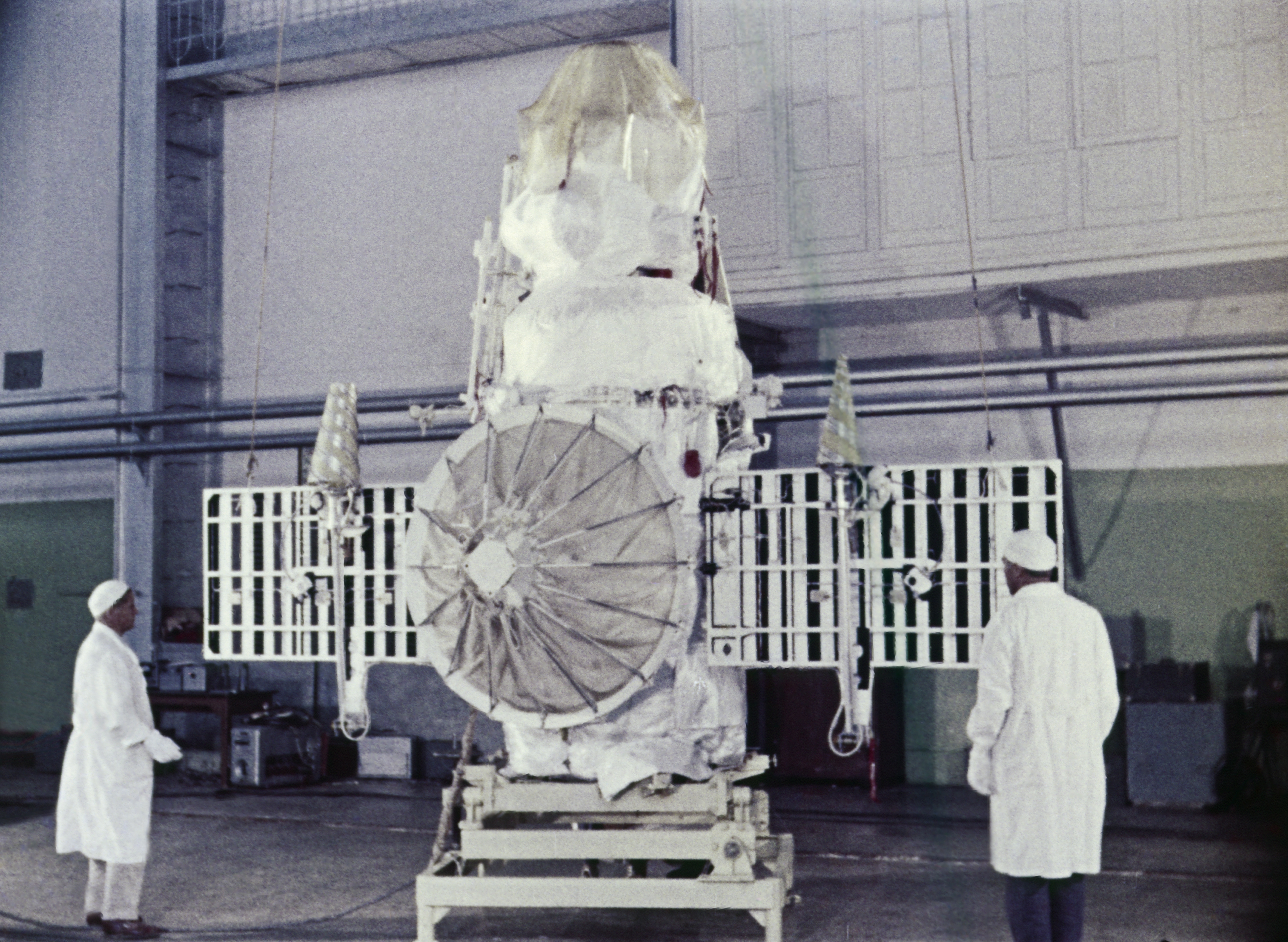Science
Related: About this forumA Soviet Spacecraft Is About to Crash Back to Earth After Being Stuck in Orbit for 53 Years - Smithsonian Magazine
The Cosmos 482 lander was intended to reach Venus, but it has instead been circling Earth since 1972In 1972, the Soviet Union’s Venera 8 spacecraft became the second ever to land on Venus. It operated for 50 minutes in the planet’s harsh environment before succumbing to the intense heat. But this intrepid lander once had a sister probe named Cosmos 482. It launched four days after Venera 8 but was unable to escape low-Earth orbit and broke apart.
While several pieces of the spacecraft burned up quickly, others remained in orbit. Now, 53 years later, one of them is about to return to our planet’s atmosphere—and potentially reach the surface.
“In the second week of May 2025, an unusual object will re-enter. It concerns the Cosmos 482 descent craft,” Marco Langbroek, an amateur satellite watcher and author of the SatTrackCam satellite tracking blog, writes in a post. “This object is the lander module from a 1972 failed Soviet Venera mission.”
It’s currently impossible to predict exactly when and where the re-entry will take place. According to modeling by Langbroek and his colleague Dominic Dirkx, the object will re-enter between the latitudes of 52 North and 52 South—that’s a large portion of the globe, spanning from as far north as England to as far south as the Falkland Islands off Argentina’s coast. The window for re-entry sits around May 10, depending on solar activity.
As reported by EarthSky’s Eddie Irizarry, when the sun’s activity intensifies, Earth’s upper atmosphere heats up and expands. This creates more atmospheric drag—or air friction—on low-orbiting objects, which slows them down and hastens their fall. Needless to say, the satellite will be making an uncontrolled re-entry.
Read more: https://www.smithsonianmag.com/smart-news/a-soviet-spacecraft-is-about-to-crash-back-to-earth-after-being-stuck-in-orbit-for-53-years-180986522/?utm_medium=distribution&utm_source=pushly&utm_campaign=editorial

Workers prepare Venera 4, a Soviet space probe, for its flight to Venus' atmosphere in 1967. Sovfoto / Universal Images Group via Getty Images
Omnipresent
(7,273 posts)I remember skylab in the Late 70’s was up for only 6 years, before it came crashing down into the Australian desert.
I don’t know what makes this spacecraft special. ![]()
PJMcK
(24,506 posts)Most satellites burn up from the friction induced heat during re-entry. The Soviet-era landing module was designed to survive the intense heat and massive atmospheric pressure of Venus which has an enormously thick atmosphere compared to Earth’s. The other Venera lander that succeeded lasted almost an hour on the surface of Venus showing how tough these craft were designed. The piece that will de-orbit will probably reach Earth’s surface because it has such strong shielding. Additionally, its trajectory is unpredictable meaning that scientists have no idea where it will come down.
May 10th will be a good day to pay attention! This video explains far more clearly.
https://www.democraticunderground.com/?com=view_post&forum=1002&pid=20272812
Rhiannon12866
(248,099 posts)I recced that post, so I read it, but it must have slipped my mind. I actually visited the Space Exposition in Moscow at the Exposition for Economic Achievement in Moscow in 1986 (when I visited the USSR with my grandmother and her peace group) but I don't remember seeing this. It was kind of like a World's Fair, and this was one we chose to see. Of course, the display that sticks in my mind was Laika, the first dog in space. ![]()
PJMcK
(24,506 posts)That must have been quite an experience in 1986! Great memories, I'm sure.
In 1975, my high school madrigal group did a three week tour of Romania which was during Ceaucescu's (sp?) dictatorship. He and his wife greeted us when we sang in the royal palace and it was quite striking when the two of them were overthrown and killed. It was a beautiful country with friendly people, spectacular food and an enthralling history. We even visited Dracula's castle!
Space, rockets, astronauts, satellites and the like have always fascinated me, particularly since I grew up in tandem with the space race. This Venus lander is a real throwback to those days. Hopefully, it will land in the ocean and not in a populated area...
intrepidity
(8,548 posts)PJMcK
(24,506 posts)I made an explanation and I provided a link to additional information.
Have a nice weekend.
marble falls
(70,001 posts)Always look up
Igel
(37,236 posts)Rhiannon12866
(248,099 posts)GaYellowDawg
(5,071 posts)Please?